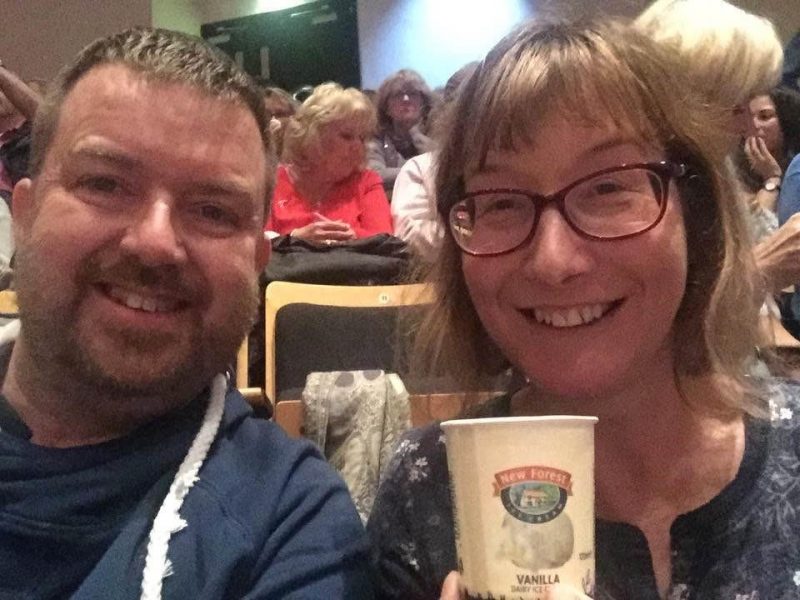It’s Christmas!! Those two words seem to divide the nation even more than Brexit has, with people falling into one of two ‘camps’…
Either you started wearing your Christmas jumper in October, had your decorations up in November and have already watched ‘Elf’ 12 times this season, or you feel like King Theoden in the Lord of the Rings movie “The Two Towers” right before the major battle at Helms Deep when he grimly says, “And so it begins…”.
There’s even a Christmas meme for that!
However you feel about Christmas, the one unavoidable fact is that for a few crazy weeks everything is different; it’s all change and it is unlike any other time of the year.
Everywhere you look there are masses of twinkling lights, stores are full of completely unnecessary Christmas gifts, and it’s suddenly OK to play Slade, Wizzard and Shakin’ Stevens songs once again!
We drag trees into our houses, light candles, eat food we never eat at any other time of the year and see people we’ve ignored since last Christmas.
And we’re in nativity season too!
A stress fuelled time of rehearsals, costumes, children trying to learn their parts, performances, tears and tantrums (and that’s just the adults!)
Most schools get theirs done towards the end of term, while many churches have theirs to do over the weekends leading up to Christmas itself.
Tensions are running high, no one can find the stuffed sheep, the star is looking a bit crumpled, and someone has to tell little Jack that the actual shepherds didn’t wear Spiderman dressing gowns…
It can all be a little overwhelming for most of us, but for many children with a wide range of additional needs it can all just get to be too much.
It’s peak season for meltdowns, with children unable to cope with so much change.
So, how can we help our children, and ourselves, to navigate a safe route through the festive fun? How can we all cope in the chaos of Christmas!
A little bit of preparation can go a very long way… thinking ahead, getting some plans in place, equipping our children and ourselves to be able to cope with all of the changes ahead, can make a really big difference to whether we survive Christmas unscathed or not.
Here’s a few things we can all do to make a difference:
Visual timetables
Having a visual timetable or schedule for each day in the run up to the end of term and then through the holiday period and for the first few days back in January can be really helpful, enabling children to know what’s happening, what to expect, what’s expected of them, equipping them to be able to cope better.
You can find an example here: http://www.take5andchat.org.uk/resources/
Being equipped – shopping survival pack
As additional needs parents, we tend to pack for a three-month arctic expedition when popping to the shops anyway, but making sure we’ve got everything we need if we take our additional needs child out at this time of year is essential.
Ear defenders? Tick. Snack? Tick. Drink? Tick. Favourite toy? Tick. Backup favourite toy? Tick. Sunglasses? Sunglasses??
Yes, they can help reduce the glare of the lights and help children who struggle with having to make eye contact. Tick.
What does your child’s shopping survival pack look like? There is some more helpful shopping survival information for you here: https://www.autism.org.uk/about/family-life/everyday-life/shopping-strategies.aspx
Pick your times
If you have to take your child to the shops with you, and you’ve got your shopping survival pack with you, carefully choose when you actually go to the shops…
Early in the day or in the evening if you can, avoiding weekends and days like Boxing Day when the sales start.
Some stores are holding special ‘Autism Hours’ which offer quieter shopping sessions, sometimes with reduced lighting and also with additional support if needed; it’s worth checking with your local shopping centre to see if they are running these.

Don’t forget to recharge
During the Christmas period it can be easy to pack our diaries with activities, visits to friends and family, feasts and fun, but we all need some recharge times too, especially children with additional needs.
Schedule in some quieter days, a long lie in if that works for you, chillaxing in front of the TV, or maybe a gentle stroll in the countryside or along the coast.
You know what works for you, but you might need to block those days out in your diary now, so they don’t get used for a visit to the in-laws instead!
Get support, and get time out
A long school holiday can be really hard work for those of us that are caring 24/7 for a child or children with additional needs.
Even your recharge days will involve lots of care and support for our children, and we need to make sure we don’t completely neglect ourselves during this time.
It’s peak season for illnesses of various kinds, and exhaustion and neglect can weaken us and make us more susceptible to bugs.
Is there someone who could look after your tribe for a few hours while you look after yourself? Maybe go and get pampered, or go to the cinema or out for a quiet meal with your partner?
It’s not wrong to look after yourself a little, and maybe you can do a trade where you repay childminding one day with you looking after their children another day?
Hopefully these tips will get you started on your own plan to help you to survive the Christmas chaos…
Each of us is different, so our plans will reflect our differences, but if we put some thought and preparation into this now, we might just survive and get to the other end in one piece!!
Now, where’s that backup Winnie-the-Pooh…